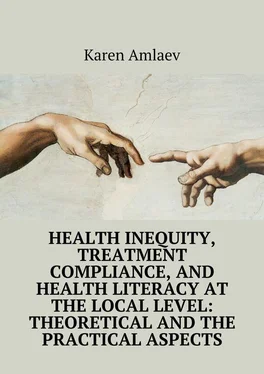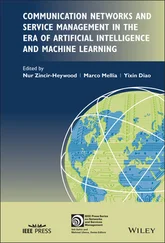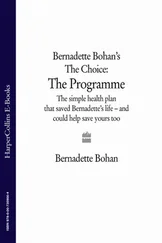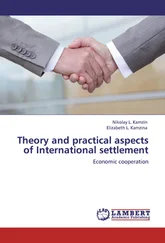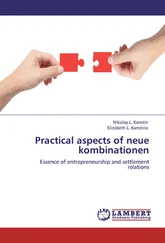We must admit that health inequity is a new and, obviously, a long-term issue in Russia. Even though there have always been differences in people’s health status this point never got so much attention. One of the sources of social tension in any country is the gap between people’s welfare, in the level of their prosperity. The level of prosperity is determined by two factors:
1) the size of (any kind of) property possessed by individuals;
2) the size of the individuals” income (Дашкевич П. Р., 1995; Денисов П. Р., 1997).
One of the criteria of civilization in any country’s social sphere is maintaining the respective appropriate living standard for the groups (families) that for some reasons cannot meet even the minimum standards and customs (food, clothing, leisure, etc.). One of the most urgent social issues in Russia that came into being because of economic changes is unprecedented inequity in income. According to the Russian Statistics Agency (Rosstat), by 2006 the income of the most prosperous groups was 16 times the share of the least prosperous ones (Российский статистический ежегодник, Россия в цифрах, 2006). However, if we take into account that the official statistics often underestimates the socio-economic differentiation in Russia not taking into view the shadow economy, then the true gap in question may be much larger. According to the data provided by T. Zaslavskaya (2005) the inequity gap between the 10 % at the extremities is 30–40 times. As noted at the Report on Poverty Evaluation made by the World Bank (2004), this fast growth of income inequity in Russia was close to a record – Russia here is very much different from other countries including Central and East Europe, where they also had a transfer to the market economy. Experts say that socio-economic differentiation similar to Russian should be looked for in Latin America rather than in European societies (Murphy, Bobak, Nicholson, Rose and Marmot, 2006). The social stratification trend in our country that became especially obvious in the 1990-s is still there under the rather long process of economic growth noticed in the recent years – income differentiation was detected in 2007 as well (Щербакова Е. М., 2008).
The high rate of economic and socio-structural changes in Russia that were ahead of most people’s adjustment capacity brought to many increased levels of chronic stress, loss of control over life circumstances, and resulted in prevalence of behaviors related to health risks, first of all high alcohol consumption (Cockerham, 2000; Bobak, Pikhart, Rose, Hertzman, and Marmot 2000; Cockerham, Hinote, Abbott, 2006).
All this could not but affect Russian people’s health, which is well seen from the growing death rate and reduced life expectancy.
As a result, by the early 21 stCentury (2000) the death rate brought Russian into one line with African countries located south of Sahara, namely 15 deaths a year per 100 people, which is nearly double the index of developed societies (Римашевская Н. М., Кислицина О. А., 2004).
The recent years have witnessed quite clear a vicious circle where the national Russian healthcare system has found itself – the more funding is invested into specialized inpatient care and hi-tech clinics the less funding is given to prevention and early detection, which results in an increased number of patients, adds to the severity of their conditions, detection of diseases at later and even very bad untreated stages, and chronization of pathologies, which requires even more funding for tertiary healthcare.
Therefore, the modern Russian healthcare system could be described with a high level of inequity in distributing health opportunities among individuals and groups of people, as well as with a conflict between the state and the society, with erosion of the aims and objectives in the sphere of healthcare (Сизова И. Л., 2007).
The impact of social inequity in the Russian society has been especially seen the young generation, whose origin and development came onto the reforms.
Under the reforms in Russia, apart from traditional disturbances there have come into being new trends in youth’s health: “psychization” and “psychologization” of diseases, increasing social disadaptation, loss of confidence about one’s strength, increased feeling of “social loneliness”. This aspect creates the necessity of a sociological reflection on the changing social conditions and their impact on new deviations in youngsters” health, and the development of new practices in certain classes and social groups.
Even though we have already discussed poverty as the most important factor of inequity, Vladimir Putin’s words – Russia is a rich country of poor people – make us turn towards the issue again, yet in the context of the Russian reality.
On the initial stage of the economic reforms in Russia the core group of the poor was traditionally represented by the so-called vulnerable groups including retirees, disabled, large families and one-parent families with children. Nowadays the focus is definitely shifting towards a different risk group – the “working” poor, the part of the society that are able to work and, due to various reasons have low income, which keeps them from supporting themselves and their families properly.
Quite often poverty has also socio-psychological preconditions. One of them is the “overtaking” poverty. This term could be used to describe a phenomenon implying prestige consumption. It is typical for youth, rather than for older people, to dress well and to look no worse than others. The things that prosperous parents” children have (fashionable and expensive clothes) set up certain example attracting children whose parents cannot afford that. If a prosperous parent can buy something never feeling and financial issue then a poor parent’s budget may be seriously affected by the same purchase. This prestige consumption makes many people live beyond their financial capacity. Those from poor families feel uncomfortable due to their own position and that of their family, which does not allow them live better. This causes a generation conflict where children blame their parents for not wanting or not being able to “make money”, even despite all the morals. As a result poor people’s children find illegal ways to make money, which they need to “catch up” with the rich ones, to live up to the standards imposed on them by the middle or the upper class (Падиарова А. Б., 2008, 2009).
The poor’s focus is shifted towards negative evaluation of the reality, pessimism, and despair. They are often unable to build proper relations within their families – high voice in the family, mutual reprimands, obscene words and abusive language become a common thing. Such conditions develop a special lifestyle and a value system, which could be described by restraint and voluntary isolation, economic and social dependency, lack of clear behavior role models, separation and political passivity, absence of future plans and self-confidence; increased disposition to conflicts in family relations (rude talks, quarrels between parents and children, frequent divorces) (Кислицина О. А., 2005).
Other reasons responsible for acute aggravation of health inequity in Russia during the transition period include:
1. Actual shift in healthcare from caring for health to clinical medicine, i.e. from mass recreational and preventive measures to individual treatment.
2. Increased share of paid services, development of new relationships with patients, which destroy the basics of medical ethics, and which make it possible to view the patient as another source of income; chronic deficit of funding with a large number of various sources of that, which never contributes to financial transparency.
Читать дальше
